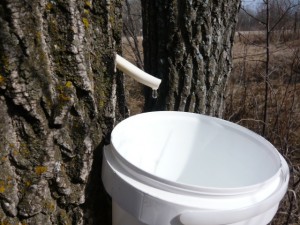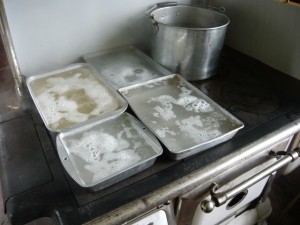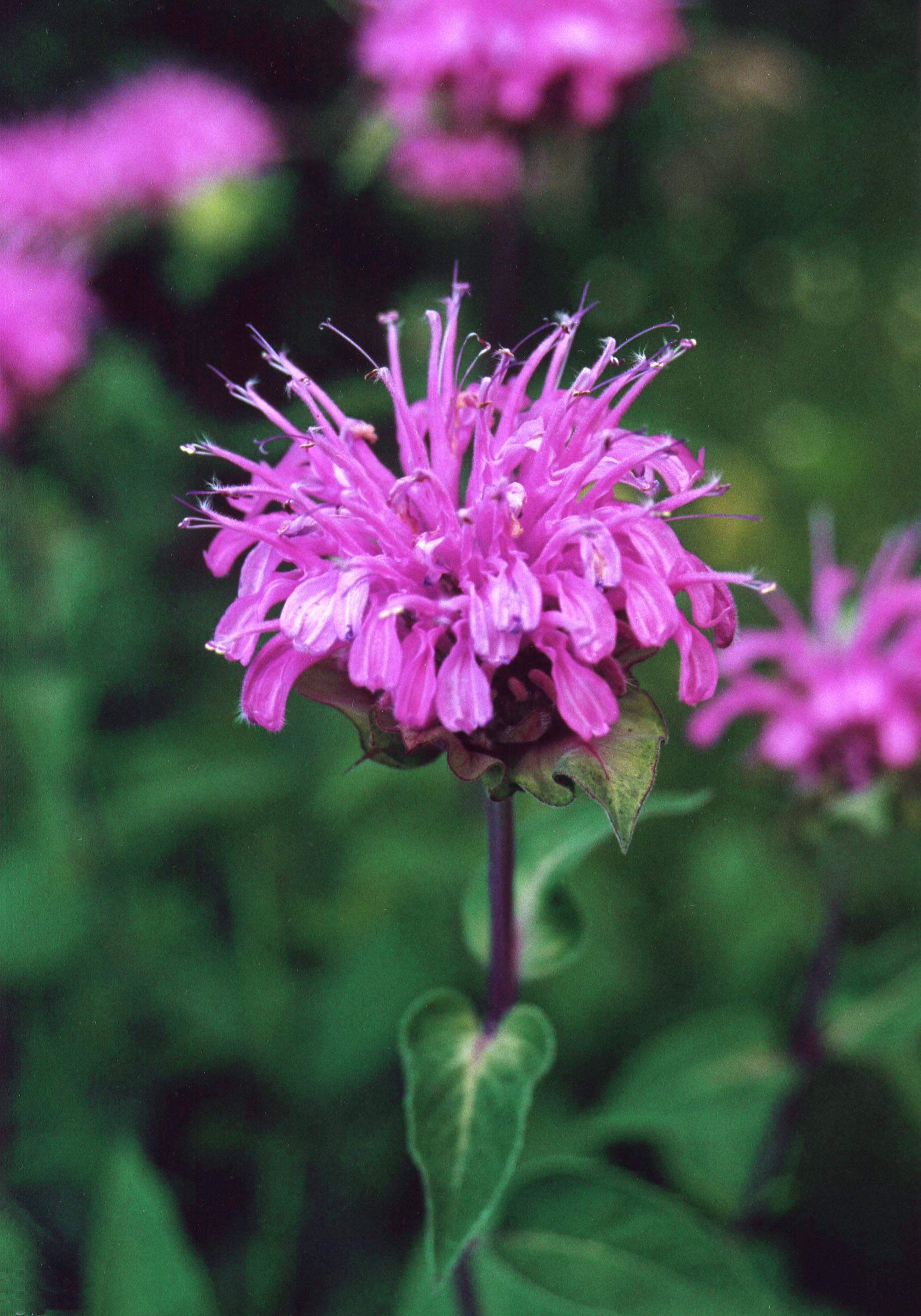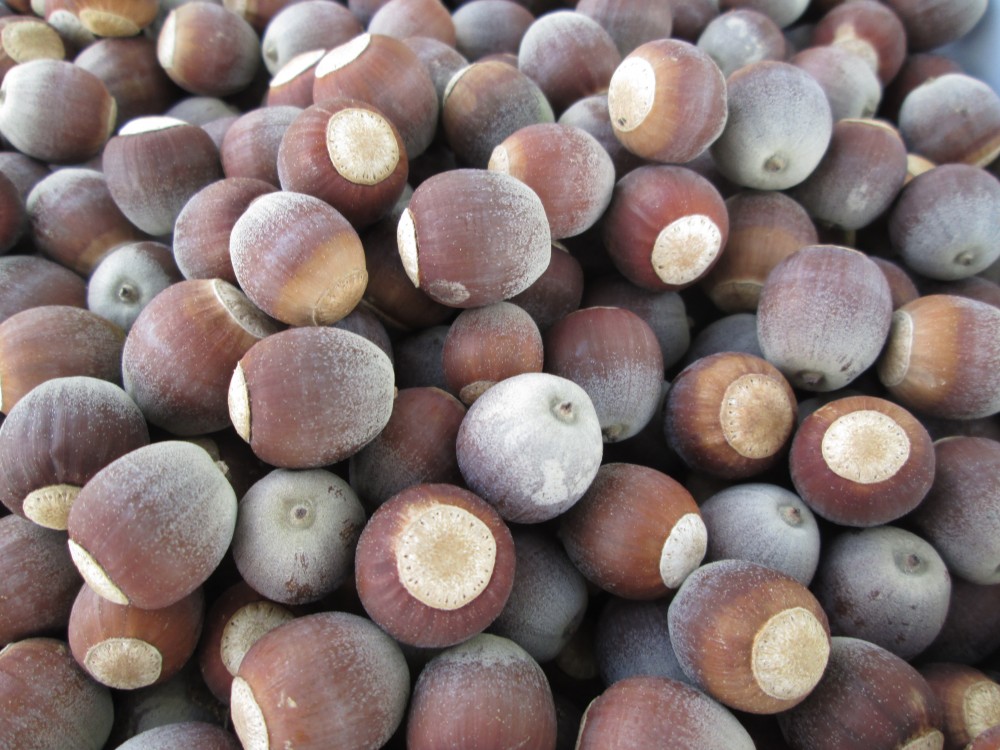I love maple syrup. I mean, real maple syrup. I remember my grade 3 teacher cooking maple syrup on the staff room stove and then drizzling it onto fresh snow for us to eat. We plunged our faces into the snow and delighted in the deliciously sweet, hardened taffy. Years later, a friend and I tried to replicate the experience by pouring corn syrup on the snow, but it just wasn’t the same. I wished sugar maples grew in Manitoba.
When I learned that our very own Manitoba maple (Acer negundo), also known as boxelder, could be tapped for maple syrup, I was pumped! Manitoba maples are commonly planted as shelter belt trees, and my yard was full of them!
 Rather than buying special taps for gathering the sap, I decided to experiment with taps made from natural materials found around me. Over the years, I have used the hollow stems of cane grass (Phragmites communtatis), shards of deer leg bones, and various bird bones, which are naturally hollow (photo). I’ve also used high bush cranberry stems, which have a pithy center that can be removed by slicing the stems length-wise and scraping it out, forming a channel for the sap to run down.
Rather than buying special taps for gathering the sap, I decided to experiment with taps made from natural materials found around me. Over the years, I have used the hollow stems of cane grass (Phragmites communtatis), shards of deer leg bones, and various bird bones, which are naturally hollow (photo). I’ve also used high bush cranberry stems, which have a pithy center that can be removed by slicing the stems length-wise and scraping it out, forming a channel for the sap to run down.
Maple syrup runs best when overnight temperatures drop below freezing and daytime temperatures reach 5 – 10 degrees Celsius. You can score the trees with a knife or drill holes with a hand or cordless drill. Place your taps on the south sides of the trees and make sure they fit snugly in the holes or you will find the sap running down the tree instead of your tap. Honey pails attached to the trees with bands of bicycle inner tube make for easy removal and replacement when the pails need to be emptied. Just make sure that the band is tight so it doesn’t stretch too much as the pail gets heavy with sap.
Gather the sap before the leaves and flowers appear for the best run and flavour. Once the buds break open, the sap tends to taste more woody.
To boil the sap, strain it through a clean cloth to remove flies and bits of bark (a piece cut from pantyhose works well), pour it into flat pans or any kind of pot and boil it down. It takes 40 litres of sap to make 1 litre of syrup, so be sure to do this outside! (Some sugar evaporates with the water and it will coat everything in your house!) I’ve used an old cookstove in my summer house, where I could open large windows for good air flow, or a wood-fired cauldron.
 Boiling maple sap can be very time-consuming, but is well worth it! You can speed the process up by removing the ice from partially frozen sap. The ice contains little to no sugar, leaving the liquid with a higher sugar concentration. Don’t throw the ice out! Melt it and drink it. If you don’t have time to process the sap you’ve collected, freeze it and use it later to make tea. Manitoba maple syrup contains the equivalent of 1 – 1.5 teaspoons of sugar per cup, which makes the perfect, naturally sweetened cup of tea!
Boiling maple sap can be very time-consuming, but is well worth it! You can speed the process up by removing the ice from partially frozen sap. The ice contains little to no sugar, leaving the liquid with a higher sugar concentration. Don’t throw the ice out! Melt it and drink it. If you don’t have time to process the sap you’ve collected, freeze it and use it later to make tea. Manitoba maple syrup contains the equivalent of 1 – 1.5 teaspoons of sugar per cup, which makes the perfect, naturally sweetened cup of tea!
You don’t need a lot of taps to get a decent amount of syrup. I have tapped as few as 5 trees and gathered enough sap to make a litre or two of syrup. There is something incredibly grounding about drinking sap straight from a tree, so even if you can only tap a few trees, go for it and enjoy the sap and all of its nutrients, including calcium and potassium, straight up!




